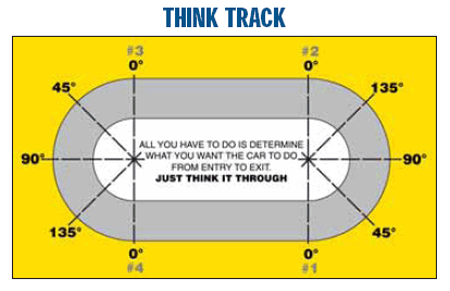How To Shock Tune Your Chassis
Courtesy of Bilstein Shocks
Study the current Bilstein set-up recommendations for your particular type of racing. These combinations are tested and proven successful, but due to the many variables that come into play under racing conditions, it is to your advantage to have a basic understanding of how shock damping rates affect your lap times. Adjustments can then be made with reason and understanding. Simply stated, shock absorbers convert the kinetic energy of the spring movements into heat. This heat is then dissipated into the air through the shock tube or body. In practical application, shock absorbers are necessary to maintain maximum tire patch contact to the track as the car corners and negotiates irregularities on the race track surface.
Spring rates determine how far your chassis rolls, pitches or squats. Shock rates determine the length of time it takes for each of these movements to occur.
Rebound damping controls the movement of that part of the car's sprung mass that is stored in a compressed spring. The rebound damping rate determines how long it takes for the compressed spring to return to the static ride height. The larger the rebound figure, the more the shock resists the compressed spring’s effort to rebound, and the longer it takes for the chassis to return to the static ride height.
Compression damping controls only the oscillation of the car’s unsprung weight. Therefore, it is normal to use less compression damping than rebound damping. The exception occurs when we choose to slow the downward movement on a particular corner of the car to mimic the effect of a stiffer spring.
Here are some guide lines to use when shock tuning your chassis at the track or making the best decisions during initial set-up. We are making the assumption that you have removed as many variables as possible and are using the best combination of springs, weight, wheel spacers, tire compound, stagger, etc.
Utilizing the “Think Track” below, study the following list of suggestions. These are not rules, not even rules of thumb, but they are tendencies that are more often true than not when racing late models and modifieds on asphalt or dirt surfaces.



